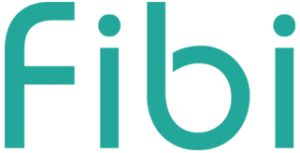It’s been two years since business as we knew it stopped or at least halted. Employers were required to send their employees home, and many organizations scrambled to create and implement a different work paradigm. Their challenge was to devise a plan to transition from the ‘normal’ in-office environment to the mandated remote, work-from-home construct. Priority had to be given to preserving continuity of services, projects, and revenue-generating activities.
The shutdown happened quickly. There were so many questions, with little answers, about the new virus. At the helm was the Center for Disease Control (CDC) sharing information on needed precautions, such as social distancing and masking. Simultaneously, government funds were allocated to the National Institutes of Health (NIH) to conduct research projects on the biological makeup of the virus, its social impact, and various aspects of the unknown.
The Need for A Digital Platform
The Requests for Proposals (RFP) released by NIH for Covid-19 applications had short deadlines requiring quick turnarounds. Across the country, universities and research facilities scrambled to get their grants’ staff online and available to assist research faculty with their submissions. Many institutions found themselves ill-prepared.
Some organizations followed a decentralized model, where personnel with grant-related activities were siloed within their assigned departments or divisions and responsible for all aspects of grants management. Others had chosen to centralize their resources by housing their grant personnel in one office, which provided the sharing of expertise, fostered team support and cross-coverage, while streamlining the grant process.
Regardless of the model, actions needed to be taken and taken quickly to not disrupt the ability of researchers to submit grants in response to the many Covid-19 related NIH RFPs.
The obvious and more easily addressed issues were getting everyone the ability to work remotely from home. This required the distribution of equipment, eg. computers, monitors, printers, etc… and network access to connect with business-related programs and software and, more importantly, each other.
Which left the bigger question of how would the research environment adjust and emulate their onsite grant process remotely? And do it effectively?
All Grant Management Systems Are Not the Same
Prior to the pandemic, some of the larger universities were utilizing home-grown electronic-based grant management systems that would allow them to complete some, but not all their grant-related activities. It was the smaller universities and research organizations, however, that struggled the most. Their workflow and processes relied heavily on spreadsheets for tracking and reporting and manual routing of grants for review and approval by their senior leadership. This was nearly impossible in a remote-based environment.
But for the organizations who had invested in a cradle to grave web-based grant management system, like Fibi, the government-mandated shutdown was merely a change in location to their grant operations.
Fibi, designed and created by Polus Software LLC, offered its clients the ability to
- initiate proposals long before the submission deadline to assist with staff planning and senior reviewers’ availability
- complete, route and track their proposals
- create customized workflows to include every level of review and approval
- communicate inside its system with proposal-related questions or comments
- see the status of proposals as they moved through the review and approval process
- update fields, dropdowns, and questionnaires based on the type of proposals being submitted
- assign alternate users to a proposal during scheduled leave or emergency absences to ensure continuity of application and timeliness of submission
- modify the proposals workflow for review and approval to incorporate as many or as few stops based on Institute’s preference and availability of reviewers
- integrate with internal systems for inclusion of project participants and budget building
Beyond Administrative Walls
For those research entities who applied for Covid-19 funds, Fibi’s proposal module was instrumental in meeting the tight submission deadlines, as applications were initiated and completed without delay. And as proposals were selected for funding, they were quickly added to Fibi’s Award module. This was beneficial to all stakeholders. The researchers could track their virus-related projects and the C-level executives could query the data in Fibi and quickly retrieve the total Covid-19 related dollars.
What is more noble, however, is that because of this highly effective technology, grant personnel were able to assist researchers across the nation to prepare and submit their Covid-19 applications resulting in greater scientific discoveries and dissemination of better information to the public.
Is your organization in need of a data transformation or enhancement?
Want to see Fibi in Action?
Get a personalized demo and explore how Fibi best fits your research administration needs.
